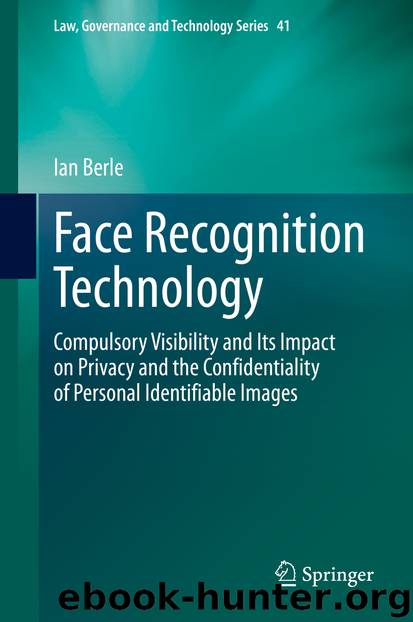Face Recognition Technology by Ian Berle

Author:Ian Berle
Language: eng
Format: epub
ISBN: 9783030368876
Publisher: Springer International Publishing
Nevertheless, the balancing of Articles 8 and 10 will vary across Europe and although Baroness Hale’s comments were appropriate; from the above criteria the moral argument against publishing Campbell’s photograph can be upheld, because the attempt to hide the truth by not disclosing her addiction motivated the newspaper to obtain photographic evidence to prove she was lying.62 Thereby breaching her Article 8 rights and exceeding the bounds of freedom of expression contained in Article 10.
However, is a photograph or facial image personal data, especially when Directive 95/46/EC states that personal data must be “adequate, relevant and not excessive” and processed “fairly and lawfully”?63
In von Hannover, the issue was unconsented publication of photographs and not unlawful disclosure of personal information as defined in the directive. Or rather a breach of privacy in terms of intrusion and not a breach of confidentiality which would reveal her identity; it was the intrusive paparazzi photography of her children that concerned Princess Caroline and not merely the fact that she was photographed. This was not data as such, but in conjunction with Campbell the two cases illustrate how privacy and confidentiality are associated and need to be respected regardless of them being public figures. Indeed, it is immaterial whether photographs are taken in public or not otherwise Article 8 would not apply to them, and their right to privacy would be superseded in favour of Article 10.
This was apparent in the case of Murray v Express Newspapers 64 when Dr. and Mrs. Murray’s (better known as J. K. Rowling) infant son was photographed in public by a paparazzi photographer, and the picture was subsequently published without his parents’ consent. The case focussed on the issue of whether there is an expectation of privacy in public, and if so:the law [would] give every adult or child a legitimate expectation of not being photographed without consent on any occasion on which they are not, so to speak, on public business then it will have created a right for most people to the protection of their image. If a simple walk down the street qualifies for protection, then it is difficult to see what would not. For most people who are not public figures in the sense of being politicians or the like, there will be virtually no aspect of their life which cannot be characterised as private.65
Download
This site does not store any files on its server. We only index and link to content provided by other sites. Please contact the content providers to delete copyright contents if any and email us, we'll remove relevant links or contents immediately.
The Pirates of Somalia by Jay Bahadur(1603)
Political Theology by Carl Schmitt(1561)
The Holocaust: A New History by Laurence Rees(1497)
The Social Animal by David Brooks(1437)
A Practical Guide to International Arbitration in London by Hilary Heilbron(1412)
Restitution by Restitution(1407)
Pirates of Somalia by Jay Bahadur(1362)
Coercing Virtue by Robert H. Bork(1339)
The Nuremberg Interviews by Leon Goldensohn(1285)
Basic International Corporate Taxation by Sebastiano Garufi(1191)
A History Of Thailand by Baker Chris(1162)
International Trade and Business: Law, Policy and Ethics by Gabriël Moens & Peter Gillies(1123)
The Global Commons by Susan J. Buck(1122)
Asian Waters by Humphrey Hawksley(1103)
Blood Profits by Vanessa Neumann(1097)
The Sovereignty of Human Rights by Macklem Patrick(1091)
Spring Fever: The Illusion of Islamic Democracy by McCarthy Andrew C(1083)
The Nuremberg Trials: The Nazis and their Crimes Against Humanity by Roland Paul(1032)
Crimes Against Humanity: Historical Evolution and Contemporary Application by M. Cherif Bassiouni(1007)
